The word mites comprise numerous species that give gardeners big trouble and wreak havoc on crops. Hemp russet mites and spider mites are such tiny pests (not visible to the naked eye) and resemble the head of a pin.
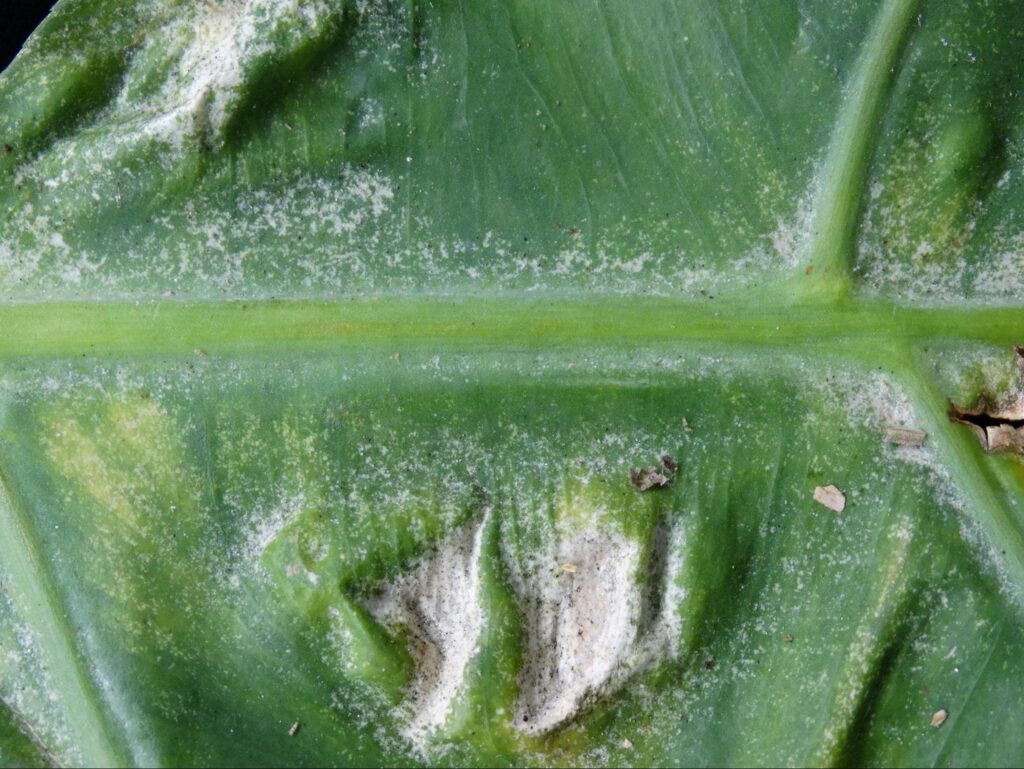
Spider mites live on the bottom of leaves and constantly suck out plant juices, interfering with plant growth and reproduction. On the other hand, russet mites are the hardest to detect and control, like spider mites.
However, unlike spider mites, the russet mite infestations do not produce fine webbing but harm the plant’s strength to fight the invasions.
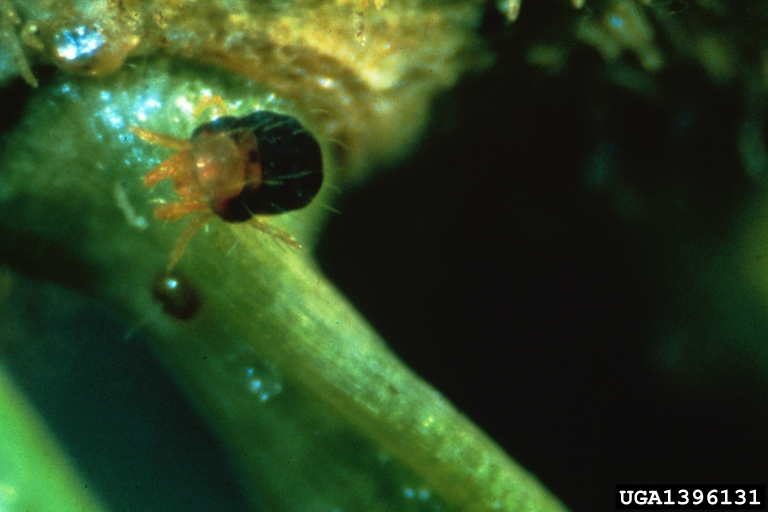
Mites are not actual insects but with the most damaging members. They suck out plant juices, interfere with photosynthesis, and negatively impact the plant’s reproductive growth. One of these members is russet mites and spider mites that inject their piercing-sucking mouthparts into plant tissues for feeding and un revival damage.
In this writing, we’ll discuss the essential characteristics of russet mites vs. spider mites, how damaging they are for plants, and how to get rid of them in natural and chemical ways.
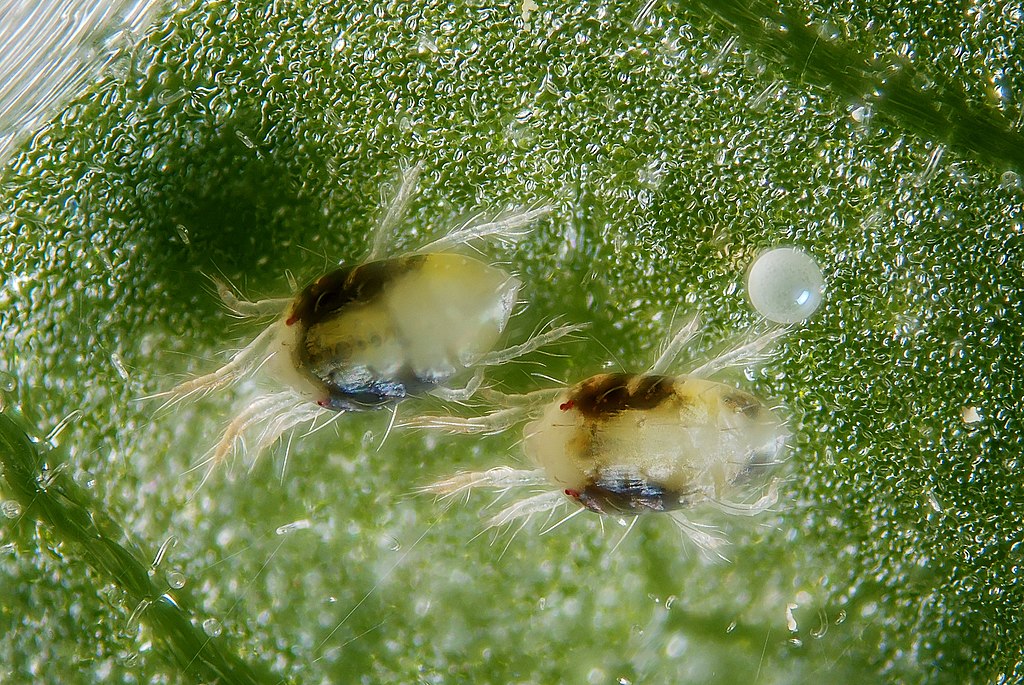
What Are Russet Mites and Spider Mites?
| Hemp Russet Mite | Spider Mite |
|---|---|
| Hemp and russet mites are the members of the Eriophyid family of mites. | Spider mites are the members of the mite family Tetranychidae. |
| Hosts more than 100 plant attacking species of russet mites and tomato russet mite is hard to detect, and only visible under a microscope. | Are not actual insects and are closely related to spiders, ticks, and scorpions. |
| Damage only appears when infected plants have visible root galls, foliage yellowing, and blisters. | Feed on the underside of leaves, and damage seems as light dots; leaves turn yellow and start dropping. |
| A hand lens is a must for the identification of the russet mite infestations. | Spider mites are the tiniest creatures and remain unnoticed until the damage appears. |
| Russet mites feeding damage symptoms resemble nutrient deficiency such as chlorotic leaves with poor strength to fight diseases. | Feeding damage involves stunted growth, defoliation, and leaf curling. |
| Affected plants start withering and wilting under heavy hemp russet mite infestations | Can cause the death of the host plant under heavy infestations. |
| Hemp russet mites are translucent with a yellow hint when in large groups. Their bodies are tapered and wedge-shaped cylinders with only two pairs of legs. | Spider mites appear pale or reddish-brown with oval-shaped bodies and almost the size of 1/50 inch long. |
| The russet mite has a broader host range. | Has more comprehensive host range from solanaceous members to weeds. |
| Spread to other healthy plants through the wind due to their smaller size. | Mode of dispersal is wind. |
| Devastating pests in indoor plants and outdoor gardens. | More aggressive on greenhouse plants. |
| They are once established, difficult to control due to their smaller size and rapid reproduction. | Rapidly enhance their populations like russet mites. |
| Host plants for russet mites are tomato, eggplant, jimson weed, petunia, lettuce, cabbage, pepper, and potato, cannabis plants. | Host plants of spider mites include strawberries, melons, trees, ornamental flowers, beans, and many houseplants. |
| Within days, russet mites will infest the entire plant and turn the leaves into yellow, curled, weak, and brittle. | Common sign of their presence is fine webbing on the underside of leaves. |
| Feed on plant sap like all mites. | Feed on plant sap like all mites. |

Life Cycle of Russet Mites
Russet mites begin laying eggs in spring which hatches within days and undergoes two nymphal stages. The nymphs are similar to adult hemp russet mites but smaller in size. Right after hatching, they start to feed on plant sap with the help of piercing-sucking mouthparts.
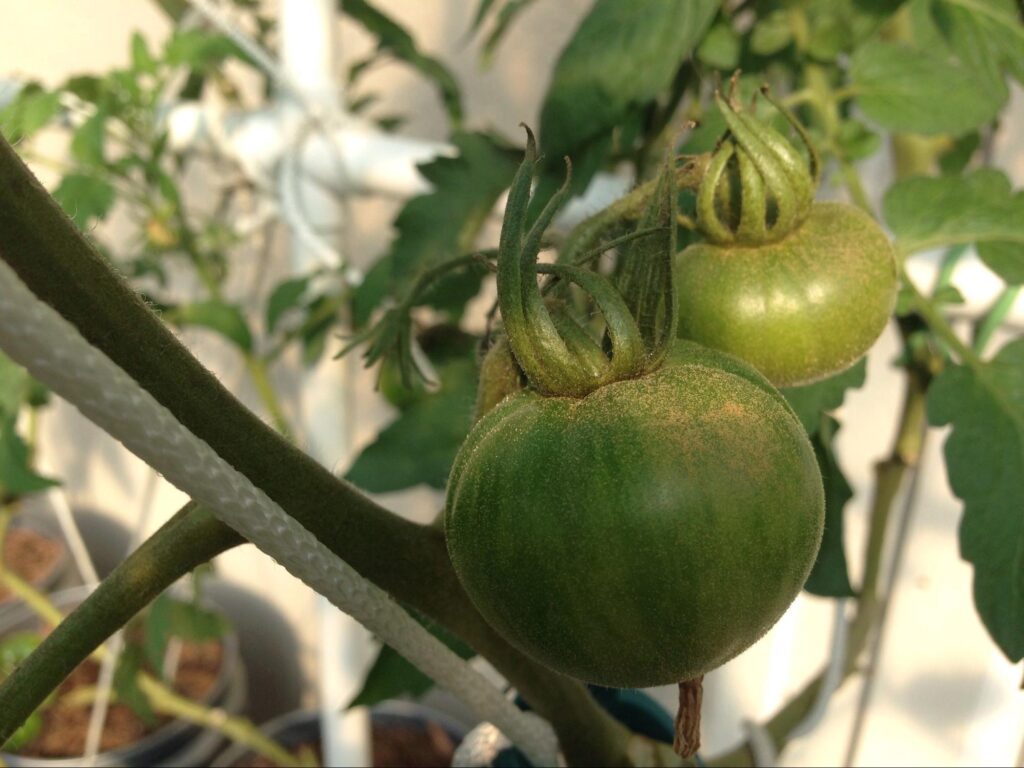
Russet mite eggs are translucent. In contrast, the female mites produce multiple generations per year and overwinter in the stems of infected plants. During warm and humid weather, the hemp russet mites complete their entire life cycle within eight days, from eggs to turning into adults.
Life Cycle of Spider Mite
The spider mite overwinters as eggs on the underside of leaves or under the bark of host plants. As the spring arrives and temperatures rise, the eggs begin to hatches, and six-legged mite larvae emerge and start feeding for a few days and undergo the first molt.

The larval stage of the spider mite undergoes two molts before developing into adults. These pests are most devastating during warm and dry weather—the female lays up to 300 eggs within a few weeks.
During the growing season, the spider mite has many overlapping generations per host plant and completes the entire life cycle within five days.
Note: Wind disperses the spider mite populations over long distances and is critical in their extensive and severe infestations and deterioration.
RELATED: Spider Mites on Houseplants: How to Identify and Manage Them?
Management of Hemp Russet Mites and Spider Mites
One of the best and easiest ways to eliminate broad mites and spider mites is to adopt preventive methods for indoor and outdoor growers. These practices involve;
- Use insect pest-resistant plants that would be able to fight harmful factors
- Prune off and discard infested plants properly, and do not put these damaged plant materials in the compost pile; otherwise, they may contaminate the material.
- Interfere with the russet mite life cycle by regular pruning and cutting off the weak and infested plants. Remove plant leaves with white casts or lesions that indicate the spider mite’s infestations.
- Regularly check your plants before the start of the spring, mainly the underside of leaves, for web and discolorations.
- Introduce beneficial mites in your garden to deter the spider and broad mites. These predatory mites gathered and destroyed the hemp russet mites.
- Use insecticidal soap to deter the outer covering of the mite’s body for your outdoor plants. The weekly spray of insecticidal soap is effective and provides long-term protection.
- Use a high-quality potting soil mix that ensures proper water drainage and root aeration. The above-ground part would also be prone to mite infestations when plant roots are weak due to poor oxygen. Also, do not shy away from asking about mite contaminations of soil mix from your supplier to avoid future problems.
- Apply neem oil because it has miticidal properties and will destroy the infestations of the russet mite. Always use more neem oil products than recommended for indoor plants to avoid leaf burn.
- Avoid overfertilizing your plants because mites are attracted to vigorous green growth and start feeding on them.
- Apply homemade sprays such as garlic, chili, and peppermint leaf to kill two-spotted spider mites.
- Spray your plants with pyrethrin and make sure to cover the insect body for successful control fully.
- Spray your plants with a vegetable oil such as olive and canola oil to suffocate the mites and kill them.
- Maintain the proper distance between your plants so the air can reach every part of your plant (new growths and larger leaves). Remove any dead, damaged, and fallen leaves from around your indoor plants to discourage the hiding places for plant-specific eriophyid species.
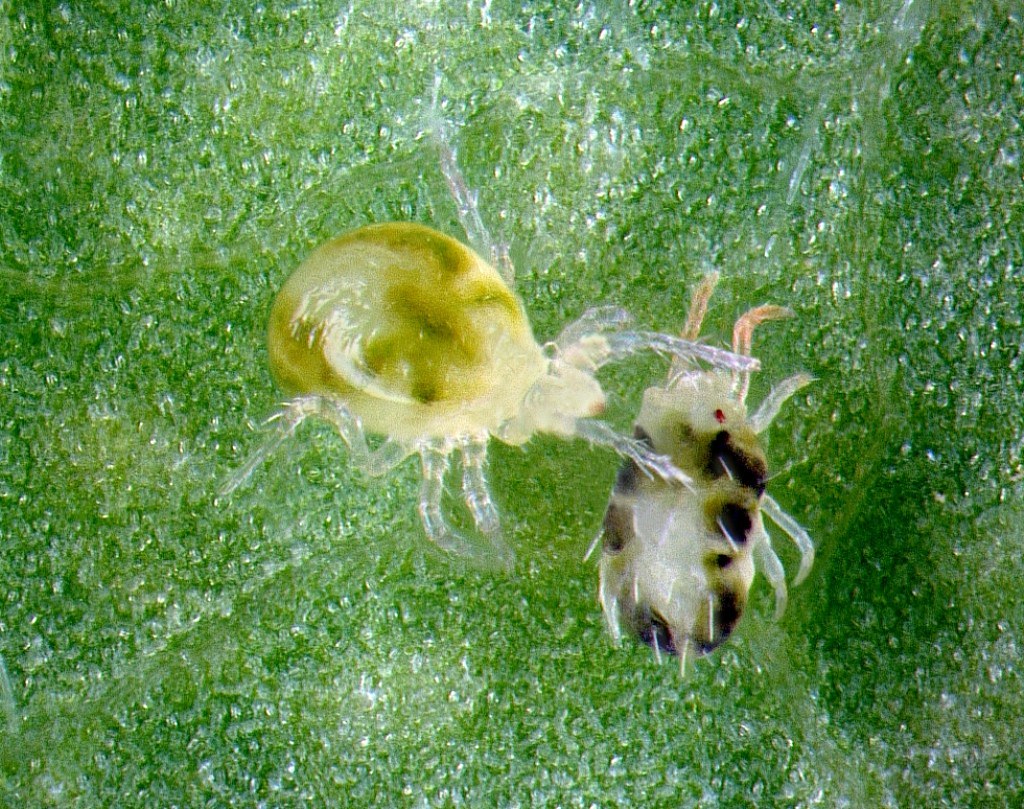
Frequently Asked Questions
What Does Sulfur Do to Russet Mites?
The sulfur acts as a suffocating agent and helps growers eliminate many garden pests, including russet mites. It is considered one of the most effective acaricides against the established infestation of tomato russet mite.
Its applications in the vegetative growth phase of plants will practically destabilize the russet mites and improve plant growth. However, the sulfur does not kill the spider mite and always leaves growers to deal with them with another treatment.
How Do You Get Rid of Spider Mites Once and for All?
Rubbing alcohol and soapy water spray is best to eliminate the spider mite infestation once and for all. Dip the cotton ball in 70% isopropyl alcohol and rub the underside of the leaves where you suspect the infestations. Always try to directly apply onto the insects as contact of the insect body with alcohol will them instantly.
The other way to use the alcohol is with water dilution, such as taking one part of the alcohol and five amounts of water to kill the mite populations effectively.
The second and most inexpensive way to deter mite infestations is spraying with soap water.
- Take one tablespoon of mild liquid dish soap per liter of water and mix them thoroughly.
- Pour into a spray bottle, shake it well, and apply to infected plant parts.
- Make sure the infested plants are entirely wet and reapply after three days to destroy eggs, nymphs, and adults.
How Can You Tell the Difference Between Spider Mites and Predatory Mites?
Both look identical under hand lens magnification, but predatory mites are shinier, unspotted, and pear-shaped with longer legs. Their long legs make them great predators than the spider mite. However, the spider and predatory mite are invisible to the naked eye.
How Do You Identify Spider Mites?
- One of the easiest ways to identify the spider mite infestation is the fine webbing on the underside of infested leaves.
- The tiny pale or white spot on the leaves may cover the entire leaf area under heavy spider mite infestation and interrupt the sunlight absorption process.
- While drawing out the plant juices, the spider mites inject toxins into plants, leading to growth reductions and foliage dropping.
Note: Knocking off at an early stage of the spider mite population will prevent the rest of healthy plants. So, use a garden hose with a strong stream of water to kill these invisible sap suckers.
Do Spider Mites Spread Quickly?
Yes, spider mites spread fastly with the help of strong wind. Furthermore, if the conditions are ideal (warm and dry weather), they can easily double their populations because they can complete their entire life cycle within five days, and an adult female mite lays up to 300 eggs in a few weeks.
Will Green Lacewings Eat Russet Mites?
The larvae of green lacewings are the voracious eater of soft bodies and sap-sucking plant pests. So, once they are out of an egg, the larvae of green lacewing roam around the plants to prey on mealybugs, thrips, whiteflies, aphids, spider mites, and scales. However, they are as effective in keeping their populations at a lower level as the predatory mites.
What Temperature Kills Broad Mites?
Broad mites are sensitive to the higher heat, and if you find the broad mites infestations on your plants. Then, transfer the potted plant into hot water (110 degrees Fahrenheit temperature) for 30 minutes. Hot water temperature should be high enough to kill mites.
Where Do Hemp Russet Mites Come From?
The warm and humid temperatures attract the hemp russet mites, which suck out the plant and cause defoliation and stunting. Then, these russet mites overwinter in the stem and buds of flowering plants.
Can Plants Recover from Broad Mites?
It is difficult for plants to recover from broad mite damage because these pests feed on plant fluids and interfere with their food-making process. Thus, making a plant weaker to fight and recover from the injury of broad mites. However, if an infestation is detected early enough, the plant can restore its average growth and reproduction; otherwise, it is not.
What Are Three Natural Enemies of Spider Mites?
The three most important natural enemies of spider mites are the same-size predatory mites. At the same time, other natural predators of spider mites are thrips, green lacewings, and pirate bugs.
Sources for Further Reading
- Tomato Russet Mite. (2013). UNIVERSITY OF CALIFORNIA AGRICULTURE AND NATURAL RESOURCES. Retrieved June 11, 2022, from https://www2.ipm.ucanr.edu/agriculture/tomato/Tomato-Russet-Mite/
- Twospotted Spider Mites. (2017, July 5). Center for Agriculture, Food, and the Environment. Retrieved June 11, 2022, from https://ag.umass.edu/greenhouse-floriculture/fact-sheets/twospotted-spider-mites
- Entomology, P. E. (n.d.). Spider Mites on Ornamentals. Purdue University. Retrieved June 11, 2022, from https://extension.entm.purdue.edu/publications/E-42/E-42.html







